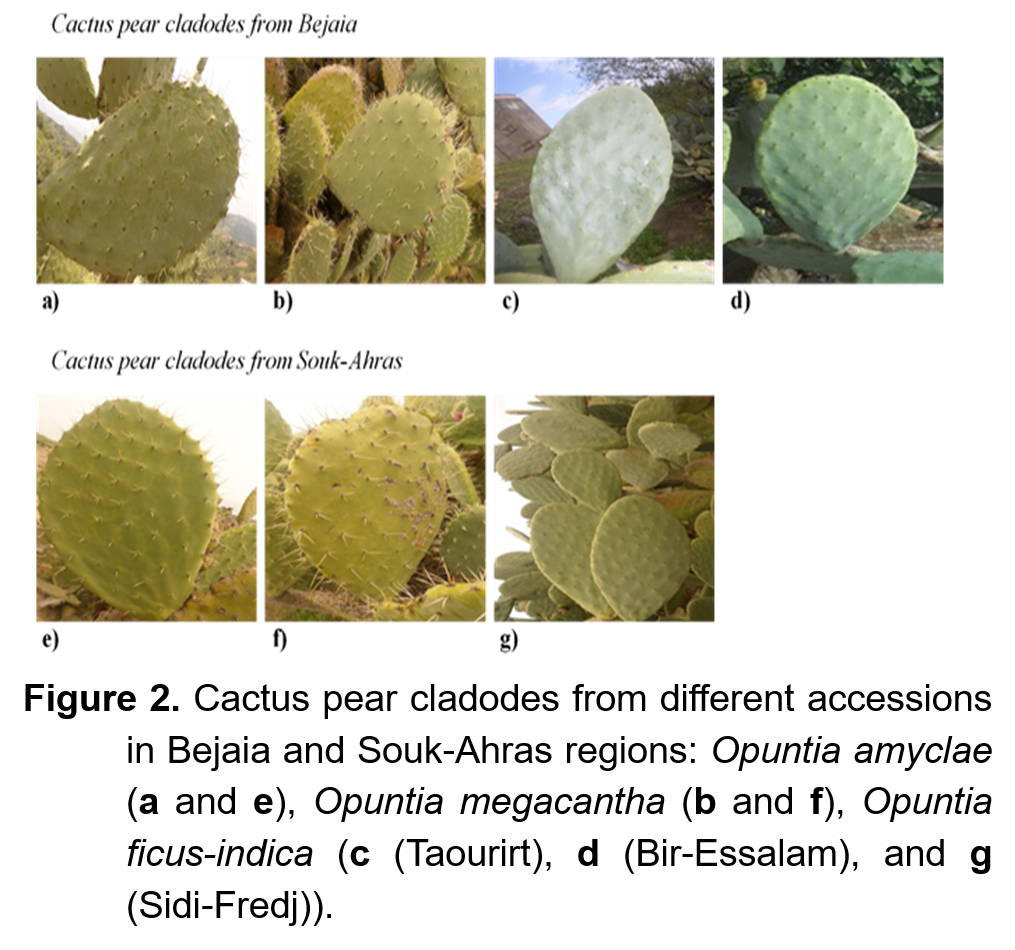Identification of some Opuntia spp. from two Algerian regions and ultrasound-assisted extraction of their phenolic compounds
DOI:
https://doi.org/10.56890/jpacd.v23i.320Keywords:
Nopal, Opuntia spp., ultrasound assisted extraction, phenolic compoundsAbstract
Much attention has been paid to cacti for their distinctive characteristics. The nopal Opuntia ficus-indica and related species are found in arid and semi-arid regions around the world. O. ficus-indica shows considerable variability in response to environmental conditions through variation of areola and spine attributes, among other traits. Therefore, the present study sought to morphologically identify some cactus pear plants in two areas of Algeria (Bejaia and Souk-Ahras) in order to evaluate the cactus pears by optimizing the extraction conditions of the phenolic compounds of the cladode, to evaluate the antioxidant activity of these compounds, to measure the total flavonoid content, and to compare the yields among three Opuntia spp. (O. ficus-indica, O. megacantha and O. amyclae) from the sites within the study regions. These three Opuntia spp. were subjected to extraction of polyphenols using a conventional method, and an ecofriendly process using ultrasound-assisted extraction (UAE) technique. Once the extractions was completed, the total phenolic content and flavonoids of the extracts were characterized. In addition, the antioxidant capacity of the total phenolic compounds (TPC) was determined. The UAE was better than conventional extraction for the recovery of TPC. The use of a solvent mixture (50% water/ethanol, v/v) improved the TPC extraction efficiency. These results show that UAE was a useful tool for the extraction of phytochemicals from cactus pear cladodes. Other factors and conditions that influence the optimization of TPC extraction should also be studied, such as pH, ultrasound frequency as well as ecological factors that could possibly influence extraction efficiency.
Publication Facts
Reviewer profiles N/A
Author statements
Indexed in
- Academic society
- Journal of the Professional Association for Cactus Development
- Publisher
- Professional Association for Cactus Development




